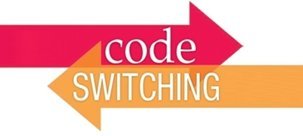Pay Attention to What People Don't Say in Negotiations:
The Role of Nonverbal Cues
Unfortunately, too many people, often due to their discomfort with negotiation and conflict, address it through email. Most negotiation experts typically advise us to meet with our counterparts in face-to-face whenever possible rather than relying on the telephone or Internet. The ability to "read" the tone of the negotiation process, can seriously handicap us and not allow the ability to build rapport. What can negotiators learn from nonverbal cues? Are we good at reading other's facial expressions and gestures? What nonverbal messages are we sending to others?
1. To mimic or not to mimic?
Many people in my training sessions ask me if they should try to imitate the other person to build trust and rapport. A corporate headhunter welcomes you into a conference room, and the two of you settle across from each other at the bargaining table. Twenty minutes later, the interview seems to be going very well. You happen to notice that you and the recruiter are sitting in the same position, leaning back with your legs crossed. Feeling self conscious, you wonder if you should shift position.
After two or more negotiators have been in each other’s presence for just a few minutes, their behavior begins to subtly converge, writes Harvard Business School professor Michael Wheeler.
Their breathing patterns and heart rates sync up, and they also tend to mimic each other’s posture and hand gestures. Rather than feeling embarrassed or silly when you and a counterpart copy each other’s behavior, you should congratulate yourself. Mimicry is a sign that you’re both striving to build rapport, connect, and find common ground, even if you don’t know how or when the mimicry started. We tend to view those who mimic our movements when they talk to us as more persuasive and honest than those who do not mimic us.
*Note that negotiators who are already aware of the benefits of mimicry may attempt to use it strategically, copying your gestures deliberately to build rapport—something to look out for.
2. Should you trust or not?
In a real-life example of the power of image, Christian Karl Gerhartsreiter, a German, successfully passed himself off as a member of the Rockefeller family for many years while living in the United States. Armed with little more than an aloof personality and a preppy wardrobe, Gerhartsreiter conned his way into marriages and high-level jobs in investment firms.
Research shows that most of us tend to automatically trust those we meet—and adjust our perceptions only in the face of overwhelming evidence. The story of Gerhartsreiter Is just one vivid example of the power of visual cues in guiding our behavior. Malcolm Gladwell in his New York Times best seller, Blink, talks about the power of first impressions and how we make snap judgments that can result in long term consequences.
When you’re evaluating a negotiator’s trustworthiness, it pays to remember that some nonverbal signs are more important than others. Professor Maurice E. Schweitzer of the Wharton School at the University Of Pennsylvania notes that liars sometimes have trouble matching their facial expressions to the emotion they’re communicating.
A liar might have difficulty coordinating her behavior—saying no while nodding yes, for example. Liars also sometimes forget to add the gestures, pitch variations, raised eyebrows, and widened eyes that we make naturally when telling the truth.
3. Can they read your mind?
We all understand the value of being friendly and patient while focusing on our goals, but it’s sometimes difficult to keep our true feelings under wraps. How skilled are we at communicating emotions that don’t quite match our true feelings? Professor Paul Ekman of the University Of California Medical School, San Francisco, has identified “micro-expressions”—fleeting, involuntary signs of one’s genuine emotions, such as a blush or a grimace—that might tip others off to our thoughts.
Research has shown that people have more trouble falsifying negative emotions than positive ones; it seems happiness may be easier to fake than sadness or fear.
In negotiations, it may be what we don't say matters the most!
Did
you miss one of the
Smart Talk Columns? |

| Browse
the archives of Audrey’s
2006 to date- Smart Talk Columns on her web!
Simply visit www.audreynelson.com and click on “Newsletters. |
|
|







 A Woman's Guide to Leadership:
A Woman's Guide to Leadership:  Audrey presented A Women's Guide to Leadership to the Business Women's Leadership Group at the Boulder Chamber of Commerce
Audrey presented A Women's Guide to Leadership to the Business Women's Leadership Group at the Boulder Chamber of Commerce



